Today we have the chance to share with you an interview of Adriaan Trampe (Co-Founder of Eza Watches). I hope you will like it and that the latter will make you want to discover a little more about this brand.
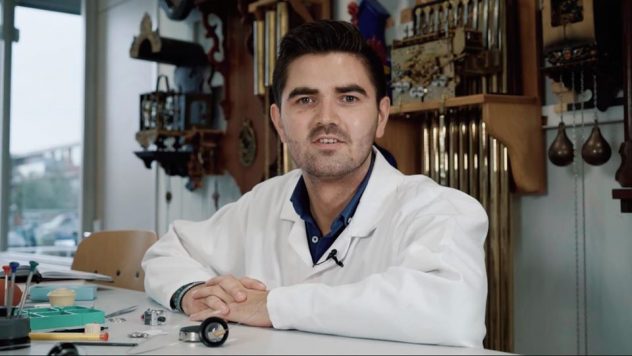
– Could you tell us a bit about you and about your story with watches?
My interest for watches started during high school. I was mostly interested in the mechanical movement itself. Also the romantic pictures of watchmakers in the Swiss mountains working on their watches while the snow was falling outside captured my imagination. We didn’t have much of this in The Netherlands (where I come from) but still, the passion for watchmaking grew. I wasn’t a very good student in high school. Always passing to the next year with very little margin. In the last year with the final exam, I failed my finals with 0.1 points. This wasn’t really a let-down for me, because It meant I only had to do 2 courses during the next year, meaning much time to spare. This is when I started the watchmaking school in Schoonhoven (a little town in the middle of the Dutch countryside). After a 10 weeks try-out course I was hooked and decided to enrol the 4-years course. From there I got more and more into the technical details of the watches and I still love it!
– When was your first take with Eza Watches?
In 2015, when Diederik was still joining the project. We had the idea to make a vintage looking dive watch. Mainly because we loved it and couldn’t afford a real one ;-). We didn’t have a name yet. After a long puzzle we came across the brand of Eza. The history had a lot of potential and the story about their quality dive cases was a great match with our idea so we decided to take over this brand. Please note, it’s only the name we took. There were no employees or stock at that moment.
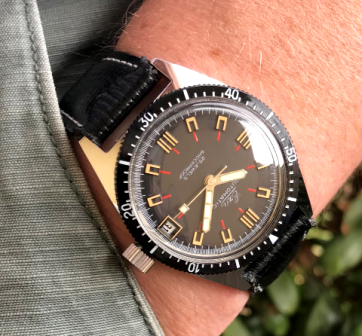
– When the idea to relaunch an old brand came to you? and when do you start working on the new launch?
Actually, after we saw the consistency between the story of Eza and the first watch we wanted to make. We started right away with designing. A good friend from me, Chip (from Aevig Watches) helped me in the beginning with the design. We took some elements of old Eza pieces from the 1900’s. For example the stipe indexes of the Sealander at each hour, this was taken from old Eza pieces. This is why the date window on this watch is between 4 and 5 o’clock. This way the date window wouldn’t cut off a part of the index at 3 o’clock. After sampling, branding and building the website we launched the watch in February 2016 with a launch party. We invited family, friends, but also potential clients and very important: watch journalists. At the launch party we sold enough pieces to start the first production. A kind of crowdfunding actually but then in our own way.
– What made you want to enter in the already overcrowded watch market?
I think the market wasn’t that busy back in 2015 as it is now. There was definitely a gap for vintage looking divers. I believe this was very much upcoming during those days. However, the market became busier and busier during the years. Correct me if I am wrong, but in 2017 there were 500 new watch brands starting a Kickstarter campaign. That’s 1.5 a day! Some of them very good, some of them a little less. With these platforms it’s easy to enter the watch market. I think the real difficulty is to stay.
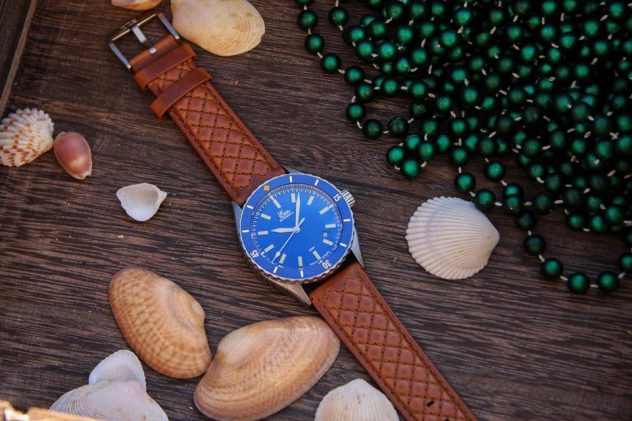
– What’s the most important thing in the process of creating your timepieces?
Quality. The design is also important, but in my opinion this is easier. As a watchmaker myself, I might be sometimes too precise in things. For example, last week I have been crushing my brains on the amount of angles on the spring holding on the bezel to the case. The thicker the spring, the less play. The less angles, the more friction the bezel will have. I want it to be perfect and the “click” of the bezel to sound perfect and feel perfect. This takes time and is something a supplier can’t do for you. I think that the watches of Eza were already of a very good quality but are even improving since there are ways to find tiny improvements from time to time.
– What steps do you go through to develop and produce them?
It starts with the idea for a new watch. For example, with the 1972 this was when I got my hands on an original piece. I loved this piece and was hooked from the moment I had it in my hands. Then starts the idea of making this piece with modern specifications. This means a larger case, ceramic bezel, higher water resistance and more. Then starts the design process where I make the drawings. Mostly by hand myself because this is the way I learned it in school. Then the computer drawing follows. I usually print them on A3 paper and hand them on the wall. Then I spend my days looking and changing little details. The next step is the prototype. Instead of creating a prototype with a CNC machine, I go straight for the tooling. This is the tool which presses the rough shape of the parts. This is much more expensive but has one (in my view) very big advantage: the proto will be exactly the same quality as the production piece. With CNC, the sharpness of the corners for example will be different. And when I order a full batch of cases, I can’t change them anymore. For a prototype, I can. I can even change the tooling if there is something I want to change to the prototype. Of course you can’t change a round case into a square one, but minor changes are no problem. When I have the prototype, I start by wearing the pieces myself. During this process I start with the details around the watch, for example the box, straps, buckles etc. Finally, the most satisfying process is preparing the sets to deliver to clients. Making full sets of new watches is the nicest job by far. If you are doing it to make someone else happy, this makes me double happy!
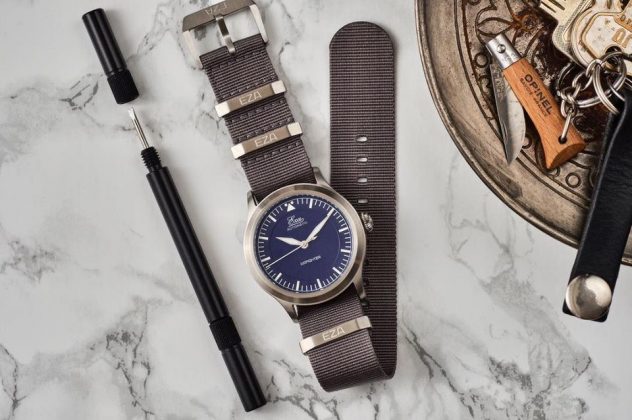
– Do you have an anecdote about the design and creation phase?
The 1972 model started with purchasing a watch from Adam. He lives in Australia and owns a very cool Instagram account called @mechanical_time (Adam is also a contributor of Watchisthis Magazine). He is very passionate about watches in general and has a unique collection of smaller old (mostly inactive) brands. He had two of the original 1972 pieces, one with black dial and one with blue dial. He was only willing to sell me one piece of the two. After some time, I contacted him if he would be open to help me in the creation of the piece. We had a Facetime call and he was very much up for it. Even though he lives on the other side of the world, we were often discussing details. Not only about the watch, but also about the boxing, the wax seal tags for example or the straps. It’s quite strange that we worked together so closely, while I never met him in person. If you have time, please head over to his Instagram page, I promise you, it’s worth it!
– From you perception, what makes the 1972 watch so special?
This is for everyone themselves to tell of course. But for me the watch is super special. The looks are very much 70’s with its fully polished case, very funky indexes and the overall shape. What surprised me even when I got the proto the first time on my wrist is how thin the watch feels. When wearing I would never say that this watch is 200-meter water resistant. It is very cool to take this watch swimming on the Tropic style rubber strap. Please have a look at one of the sideview pictures of the watch and you will see what I mean. It is truly a pleasant watch to wear.
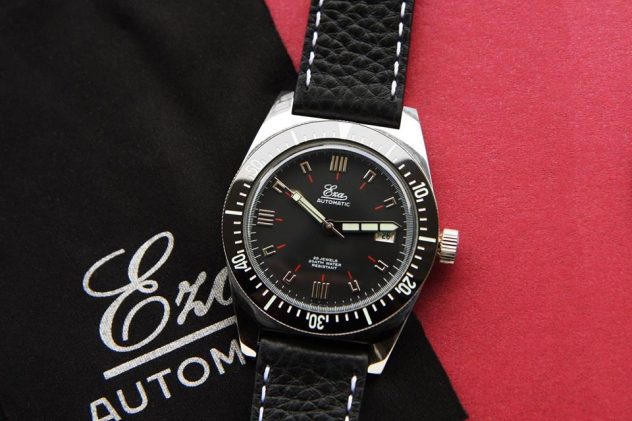
– The style of the 1972 is of course vintage as it’s a reedition; Are vintage watches the kind of pieces that have your preference?
Yes, for sure. Although I like many different watches, this style is most definitely my preference. I like many different vintage things; one example is vintage cars. My family has been involved in classic cars for a long time. I basically grew up with them and was (from time to time) allowed to drive the MG A MKII from when I was 18 years old. Black with red interior, changed from 4 to a 5 speed. Some people might say that I am behaving like an old guy, but this just gives me so much pleasure and has such a big cool factor to drive these cars. However, the technique is from the 1950’s and using these cars as a daily driver can be a bit of a challenge. What if you can have a something like this with the looks and cool factor of an old one, but the technique and materials of today? In my view the 1972 watch is exactly that. A vintage looking piece with a modern movement, modern materials and modern performance. Easily wearable as a daily watch!
– You have chosen a direct distribution mode. Could you explain us why? And what is the advantage of this distribution method for a young independent brand like yours? Or maybe you also want to try another kind of distribution?
That’s a very good question. I think that this type of distribution is the easiest to choose when you are starting a watch brand. Working with retailers is a very different game. They take (especially in my price category) high margins and your business would be to push your watches to the retailers. Selling higher number of watches to be able to cover your costs. The multiplier of a watch from buying price to selling price is much higher when you work with retailers. It would simply not be possible to sell my product in a retail store for this price. I would simply lose money on it even before looking at my fixed costs.
I very much believe that this is the future. Big brands are struggling to start selling online. I don’t have any of these problems, because my main business is already online.
Besides, I really like to talk to the final client myself. If you order a watch or ask a question, I answer or help you myself and I love doing this. Making the client happy is the number one priority.
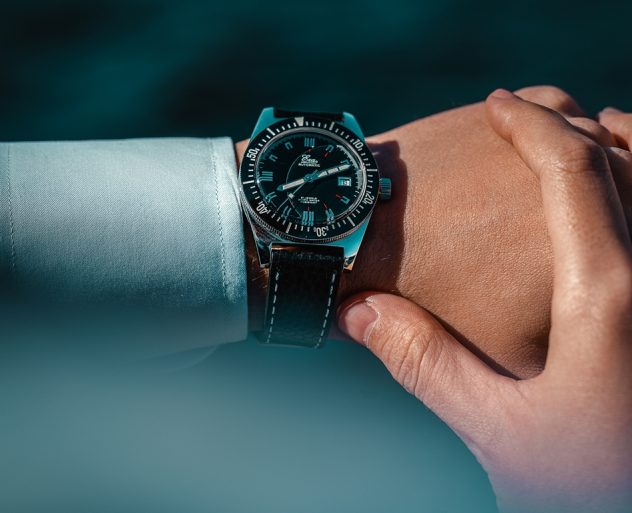
– For you, what’s the most important thing to find in a watch?
I think it is difficult to say what the most important thing is. There are many important things, the design, the quality, the price, the movement. What is the most important in my view is that there is a story behind the watch. Why the watch is designed the way it is? Why does it house a certain calibre? Why is it made from these certain materials? To know the story about the piece provides you with something extra when you wear the watch (in my view). A nice watch becomes more than a nice watch, you share the story of this piece and you can share this, together with your passion for watches, with the people around you.
– Even if old by the soul, you’re still a very young brand: What are your plans for the future?
Very nice question. There are many plans with the brand and basically time is the only thing slowing me down. One of the ideas is to start travelling around Europe. I bought an old leather suitcase and transformed it into my own little showcase for the entire collection. Everything is in there, one piece of every watch, the straps, bracelets, watch rolls, you name it. The idea is to travel every month to a big city and stay there for 3 days. I will rent my own little place inside a shop and everyone will be welcome to come try my watches. I will be very happy to explain everyone the story about my watches. Obviously, this all has to wait for after the Covid situation…
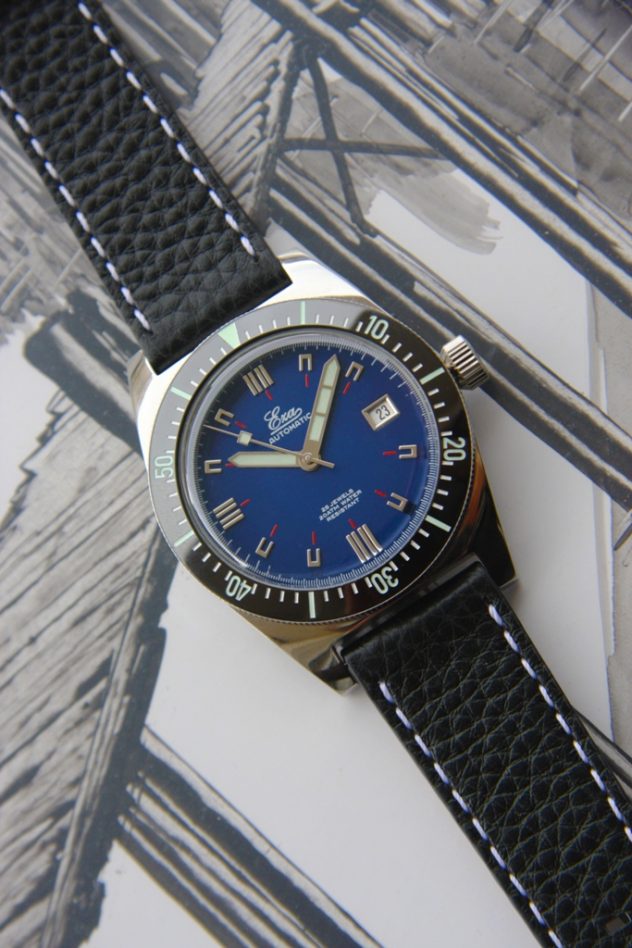
– What aspect of your brand you think people should know more about?
I would love to tell people more about the details of the watches and why they are made this way. Because I chose all the details myself, I can explain you everything. It would be great to tell people more about this.
Currently I added different sections under every watch on the product page which explains different details. I would like to invite people to have a look there and not hesitate to ask any questions.
– To finish, are you also a watch collector and if yes, what kind of watches do you collect?
My watch collection is not very impressive to be honest. I wear Eza timepieces 99% of the time. For the rest I have some watches I made during my watch study. These house mostly 6498 hand winder movements. And one more complicated piece with an ETA 7751 movement. Oh and before I forget, I do own a Seiko SKX009.
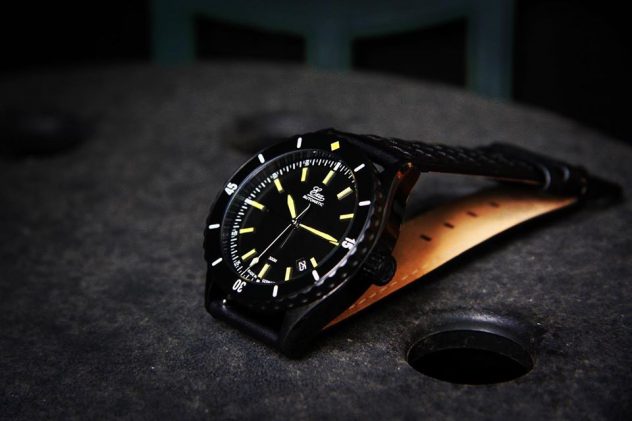
Hope you guys liked this interview. On our next post we will review the new 1972 watch.
In the meantime, I invite you to discover Eza Watches on their website, Facebook and Instagram page.
Jonathan Kopp

Great folk he is